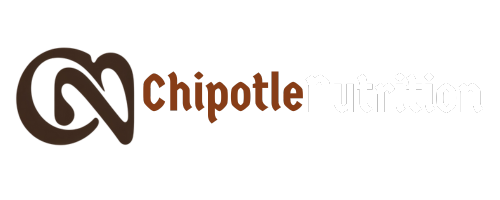Ketamine Therapy For Depression: Fast Relief and Brain Healing

It is an illness that is common in millions of people across the globe, who suffer from depression. Many people struggle with treatment-resistant clinical depression, a condition that doesn’t respond to standard medications or therapies. In recent years, ketamine therapy for depression has emerged as a promising treatment option that offers rapid symptom relief and helps reshape the brain’s neural connections. Since it can induce mood improvement within a matter of hours, ketamine is a revolutionary solution to treatment in people who are in dire need of assistance opposed to waiting weeks and possibly months to feel the effects of standard antidepressants.
Table of Contents
This blog explores ketamine therapy—how it works, its benefits, treatment process, and key considerations for patients. It also compares ketamine with traditional antidepressants and answers some of the most frequently asked questions.
Key Points:
- The Ketamine therapy produces quick effects in relieving depressive conditions.
- It assists in developing and reawakening brain connections, which are suppressed by depression.
- Ketamine used with psychotherapy has a positive impact on prolonging the treatment outcomes.
What Is It About Ketamine Therapy That Effects The Brain?
Ketamine stands out as it is differentiated with the classic antidepressants, which target the glutamate system of the brain that is essential in mood control and cognition. Studies have revealed that in the case of depression, and particularly in cases that are of long duration or severe, the brain loses its share of the synaptic connections- these are the connection centers between the nerve cells. When a person is subjected to stress or depression, these connections are weakened or lost, and the brain cannot control emotions well.
Ketamine assists in restoring these connections very fast. Studies have indicated that the brain starts to grow synapses within 24 hours of treatment with ketamine, essentially re-modeling the brain. Such regenerative therapy helps in enhancing communication between nerve cells, which may enhance mood and relief symptoms of depression. In contrast to the common type of antidepressant, which acts on serotonin or dopamine, ketamine modulatory effects on glutamate receptors provide a new tool to treat depression where previous drugs have been unsuccessful.
E.g., let us say, the brain is a road system. Depression leads to roads being closed or getting bad. Ketamine treatment is similar to a quick road fix team that clears and forms new paths so that messages can freely get to their destinations.
What Are The Benefits Of Ketamine Therapy For Depression?
Ketamine therapy has a number of important advantages that distinguish it:
- Fast-Acting: While conventional antidepressants typically take several weeks to show results, ketamine can deliver noticeable relief within hours. This rapid response is crucial for individuals experiencing severe depression or suicidal thoughts.
- Good Against Treatment-Resistant Depression: Ketamine can reduce treatment-resistant depression symptoms in many patients who do not respond to standard antidepressants. Research indicates that more than 70 percent of patients reduce their symptoms when they receive a couple of doses using ketamine infusions.
- Long-Term Results Using Psychotherapy: Psychotherapy, when combined with ketamine, can last weeks or months because patients ponder over their experience and develop skills to cope.
- Enhances Solidity of the Brain: Ketamine enhances brain plasticity, which assists in adapting and healing the brain completely. This will increase the efficacy of other therapies, such as antidepressants or counseling, following sessions of ketamine.
What Is The Standard Ketamine Therapy?
Ketamine therapy is normally handled in a medical facility by a clinician to guarantee protection and efficiency. The most used options consist of intravenous (IV) infusion, nasal spray, and oral doses, of which intravenous infusion is the most traced and effective.
Treatment Steps:
- First Evaluation: A close examination by a psychiatrist or clinical worker to decide whether ketamine therapy is suitable or not.
- Treatment Sessions: The process of treatment most often consists of a number of ketamine infusions or doses that the patient undergoes during the following weeks. The sessions would take approximately 40 minutes to one hour.
- Monitoring: During and post-treatment, vital signs and mental status are continuously monitored to control side effects and make it safe.
- Follow-Up Care: Psychotherapy or counseling is also frequently prescribed in order to utilize fully the effects of ketamine and stimulate long-term recovery.
| Treatment Method | Description | Pros | Cons |
| IV Infusion | Ketamine delivered directly into the bloodstream | Fast onset, well-studied | Requires clinic visit, medical supervision |
| Nasal Spray | Esketamine approved by FDA for resistant depression | Convenient, FDA-approved | May cause dizziness, and requires monitoring |
| Oral | Ketamine is taken by mouth | Easy to administer | Less studied, slower onset |
What is the Comparison of Ketamine and Old-System Antidepressants?
| Feature | Ketamine Therapy | Traditional Antidepressants |
| Onset of Action | Hours to days | Weeks to months |
| Mechanism | The glutamate system promotes neuroplasticity | Serotonin, norepinephrine, dopamine systems |
| Effectiveness in Resistant Cases | High (70%+ response rate) | Often limited in treatment-resistant cases |
| Duration of Effect | Weeks, especially with therapy | Requires continuous use, variable response |
| Side Effects | Dissociation, mild sedation, monitored clinically | Sexual dysfunction, weight gain, GI issues |
Ketamine’s fast response and unique mechanism directly counter depression, offering hope to patients who haven’t improved with conventional antidepressants. However, it does not serve as a miracle cure and should only complement a comprehensive treatment plan.
What are The Risks and Considerations Of Ketamine Therapy?
Though in general there are no particular risks involved in ketamine therapy under medical supervision, there are several points to consider:
- Dissociative Significance: Patients can have an impression of detachment or perceptual alteration in the course of treatment. These effects are short-term and well observed.
- Potential Misuse: Ketamine is also referred to as the recreational drug, and, therefore, clinical application should be highly controlled to avert abuse.
- Not a Fit in All People: Certain medical conditions that an individual may experience will not make them viable candidates, coupled with uncontrolled hypertension and the experience of psychosis.
- Demand of Repeated Treatment: It is common that symptom relief needs a number of sessions, and frequent sessions are also sometimes required to reinforce the gains.
Caution: Ketamine therapy should only be obtained with licensed medical professionals to eliminate the risk of danger and inadequate treatment.
Leave it as a reminder: ketamine is not self-administerable; it is not an outside-of-clinical affair.
Conclusion
Ketamine therapy for depression represents a significant advancement in mental health treatment, especially for those with treatment-resistant depression. What makes it special compared to conventional antidepressants is that it allows a person to get rid of the symptoms and contribute to the healing of the brain rather quickly. Combined with psychotherapy, ketamine based treatment can offer a longer duration of improvement and make patients get back, control over their mental problems.
Although ketamine is not the first choice of drug in treating all depression conditions, it provides a ray of hope to many patients who have failed to respond to the traditional treatments. With the further research, ketamine treatment could be made more available and included in the general approach to the depression and other mental health issues.
FAQ’s
What is the ketamine time frame of action in depression?
The depressed mood may be relieved within a couple of days thanks to the administration of Ketamine.
Is ketamine therapeutic administered safely?
Ketamine therapy is mostly safe when applied by skilled medical personnel under controlled side effects.
What is the duration of ketamine therapy?
The lasting period could be a week or months, particularly with the combination of psychotherapy.
Is it possible to take ketamine therapy together with other antidepressants?
Yes, ketamine is frequently prescribed in combination with classic antidepressants so that the whole treatment process can be more effective.
Who can be a good candidate for ketamine therapy for depression?
It may help patients who have a severe symptom and have failed to respond to conventional interventions or have treatment-resistant depression the most.
Latest Posts
You Might Also Like

Chipotle Nutrition – Your go-to guide for calories, healthy choices, and balanced meals at Chipotle.
TOP NEWS
© Copyright 2025 Chipotle Nutrition. All rights reserved














No Comments